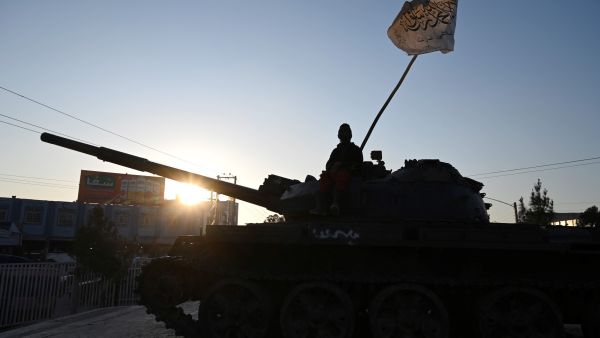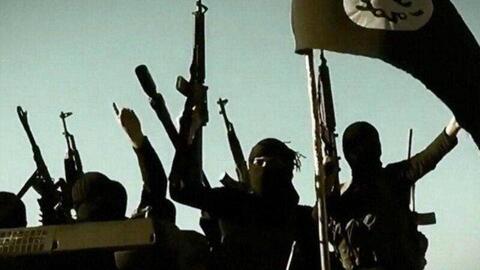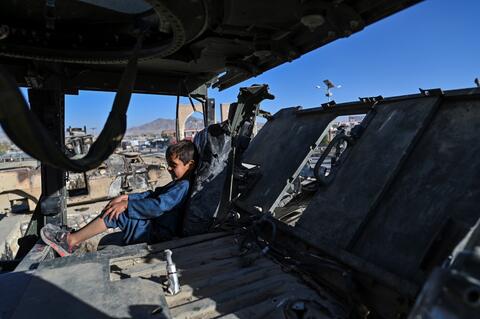The United States on Monday offered a reward of up to $10 million for information leading to the capture of ISIS-K leader Sanaullah Ghafari and for help finding those behind the August 2021 attack at Kabul airport that killed 13 American service personnel.
Ghafari was appointed by the Islamic State's core leadership in the Middle East as head of its Khorasan affiliate - using a historical term for the Afghanistan and Pakistan region - in June 2020, according to the State Department.
Starting soon! At 1pm ET @StateDeptDSS Assistant Secretary of State Gendry Smith and Christopher Landberg, Acting Principal Deputy Coordinator for @StateDeptCT brief foreign media on "New Initiatives in the Fight Against ISIS-K."
— Foreign Press Center (@ForeignPressCtr) February 7, 2022
Watch live at https://t.co/RVDsrpFZLx @StateDept
'An ISIS communiqué announcing his appointment described al-Muhajir as an experienced military leader and one of ISIS-K’s "urban lions" in Kabul who has been involved in guerrilla operations and the planning of suicide and complex attacks,' it said, using one of his known aliases.
It comes after the United Nations reported that terror groups now enjoy greater freedom in Afghanistan than at any time in history.
ISIS-K previously previously fought the Western-backed government that fell in August as well as the Taliban.
The State Department said Ghafari was responsible for approving all ISIS-K operations throughout Afghanistan and arranging funding to conduct operations.
It declared him a 'Specially Designated Global Terrorist' in November.
Some reports suggest the 27-year-old was born in Iraq - based on his nickname of al-Muhajir or 'the migrant - but U.S. government documents list his birthplace as Afghanistan.
He was believed to have been a mid-level commander in the Taliban-allied Haqqani Network, before joining the Islamic State affiliate.
For years ISIS-K was overshadowed by the Taliban.
But it has prospered in recent months after the collapse of the Western-backed government, according to a United Nations monitoring report published last week.
It said that estimates of ISIS-K strength had risen from 2200 to closer to 4000, following the release of several thousand prisoners.
'There are no recent signs that the Taliban has taken steps to limit the activities of foreign terrorist fighters in the country,' said the report. 'On the contrary, terrorist groups enjoy greater freedom there than at any time in recent history.'
ISIS-K was catapulted into the limelight with a suicide attack on Kabul airport during the final days of the chaotic American withdrawal.
The Pentagon on Friday released the findings of its investigation, concluding that alone ISIS-K bomber 13 U.S. troops and at least 170 Afghans.
US offers US$10 million reward to help track Isis-K leader Sanaullah Ghafari https://t.co/u99sHnQy1d pic.twitter.com/mJp6rku6AQ
— Zyite.news (@ZyiteGadgets) February 7, 2022
The bombing occurred on Aug. 26 as U.S. troops were trying to help Americans and Afghans flee during the aftermath of the Taliban's takeover, and compounded America's sense of defeat after 20 years of war.
It was the darkest chapter in the operation and prompted questions about why the Biden administration had not been better prepared.
Investigators laid out a detailed account of how the bombing was carried out.
A lone bomber, dressed in black, carrying about 20 pounds of explosives was responsible, they said.
He was able to approach the airport's Abbey Gate without being stopped because Afghans had begun using a variety of different routes to avoid Taliban checkpoints.
Investigators displayed photographs taken of the crush in the area just before the blast and explained that Marines were forming human barriers to prevent people from getting through unchecked.
They said the bomber detonated his explosives by a canal that formed part of the physical defenses of the airport - and likely raised the bomb in the air as he did so.
They found the remains of a tattered backpack among the debris.
The dead and wounded Americans were hit as shrapnel and ball bearings flew across the canal ditch, and the worst-hit had been standing up on a wall to search potential refugees.
Although the greatest threat remains within Afghanistan, officials in October said they feared ISIS-K could develop the ability to strike outside the country within six to 12 months.
This article has been adapted from its original source.










